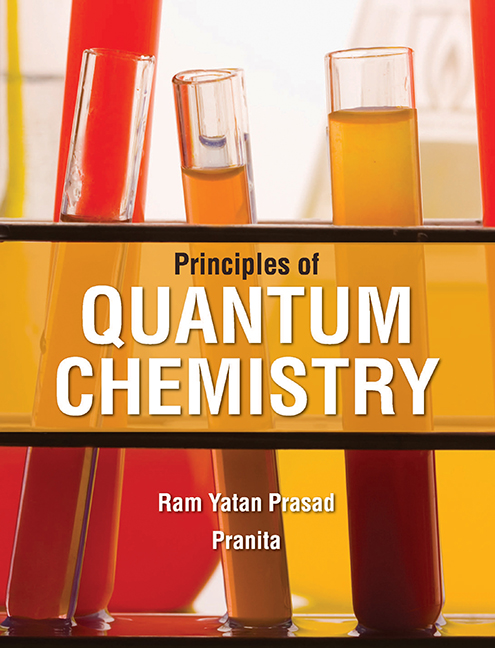Book contents
- Frontmatter
- Dedication
- Contents
- List of Figures
- List of Tables
- Foreword
- Preface
- 1 Quantum Theory
- 2 Wave–Particle Duality
- 3 Mathematical Techniques
- 4 Quantum Mechanical Operators
- 5 Postulates of Quantum Mechanics
- 6 The Schrödinger Equation
- 7 Playing with the Schrödinger Equation
- 8 Hydrogen Atom
- 9 Approximate Methods
- 10 Diatomic Molecules
- 11 Multi-electronic Systems
- 12 Polyatomic Molecules
- 13 Hückel Molecular Orbital Theory/Method
- 14 Density Functional Theory
- Glossary
- Appendix I
- Appendix II
- Appendix III
- Model Question Papers
- Index
2 - Wave–Particle Duality
Published online by Cambridge University Press: 02 December 2022
- Frontmatter
- Dedication
- Contents
- List of Figures
- List of Tables
- Foreword
- Preface
- 1 Quantum Theory
- 2 Wave–Particle Duality
- 3 Mathematical Techniques
- 4 Quantum Mechanical Operators
- 5 Postulates of Quantum Mechanics
- 6 The Schrödinger Equation
- 7 Playing with the Schrödinger Equation
- 8 Hydrogen Atom
- 9 Approximate Methods
- 10 Diatomic Molecules
- 11 Multi-electronic Systems
- 12 Polyatomic Molecules
- 13 Hückel Molecular Orbital Theory/Method
- 14 Density Functional Theory
- Glossary
- Appendix I
- Appendix II
- Appendix III
- Model Question Papers
- Index
Summary
In Chapter 1, we discussed about the black-body radiation where in we learnt regarding Wien's law, Rayleigh−Jeans law and Planck's radiation law. Planck's quantum hypothesis or Planck's radiation equation is general by which Wien's Law and Rayleigh−Jeans radiation law can be arrived at. Actually, Wien's law and Rayleigh−Jeans law are special cases of Planck's radiation law. We also studied the photoelectric effect, Compton effect and atomic spectra in the first chapter. The photoelectric effect and Compton effect are vividly indicative of the corpuscular (particle) nature of visible light; X-radiation, interference and diffraction phenomena are evidence of its wave nature. Therefore, it can be concluded that the motion of photons clearly obeys special laws in which corpuscular and wave characteristics are combined. In the same chapter, we dealt with the atomic spectrum of hydrogen. Analysis of hydrogen atom spectrum should convince us that light is emitted or absorbed in energy quanta, i.e., in particles, which we know as photons. It does not mean that we must revive the old controversy of the corpuscular versus the undulatory theories of light. On the contrary, we know now that both theories are part of a more general theory. In some instances one theory applies and in others we must invoke the alternative.
Einstein explained the photoelectric effect by Planck's quantum theory and he also handled the specific heat of solids considering the said theory. In the present chapter, we shall focus on wave−particle duality and Heisenberg's uncertainty principle and their verification by experiments.
Dual nature of electron/de Broglie wave
Keeping in view that light has dual nature, in 1924 de Broglie suggested that a small particle like electron would also behave both as a particle and as a wave. This is called the dual nature electron or matter wave or de Broglie wave.
We know that the energy of a photon can be written in terms of Planck's quantum theory, i.e.,
E = hʋ
But according to Einstein theory of relativity energy can be expressed as
E = mcs2
where, m = mass of electron; c = velocity of light; h = Planck's constant; ʋ = frequency of radiation.
- Type
- Chapter
- Information
- Principles of Quantum Chemistry , pp. 35 - 55Publisher: Foundation BooksPrint publication year: 2014

